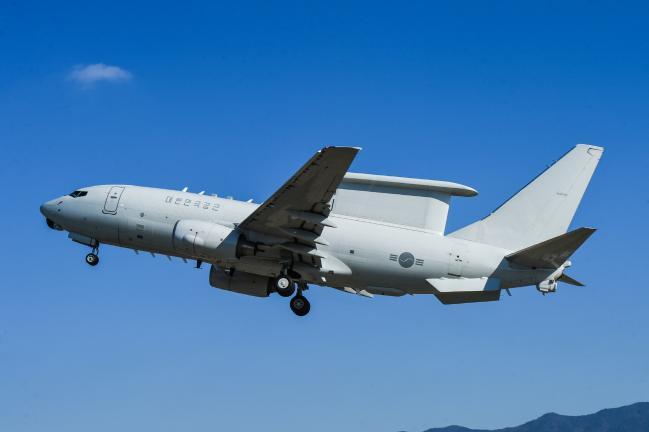This article is published in Aerospace Daily & Defense Report, part of Aviation Week Intelligence Network (AWIN), and is complimentary through May 09, 2024. For information on becoming an AWIN Member to access more content like this, click here.

E-7
Canada plans to spend more than CDN$5 billion ($3.65 billion) on the acquisition of airborne early warning (AEW) aircraft, defense officials have confirmed.
In a statement to Aerospace DAILY, officials for the Canadian Department for National Defense said the funding was of an “appropriate level,” to deliver AEW capabilities and assets.
Acquisition of an organic fleet of AEW aircraft was one of the headline purchases outlined in Canada’s new defense vision, Our North Strong and Free, published April 8.
The document said such a platform would detect aircraft and missiles at long ranges in real time and from much farther away than ground-based radars, then manage the battlespace in response to a threat.
However, the document said that just CDN$307 million was being made available for the program between 2025 and 2044, a fraction of the money needed for one AEW aircraft, let alone a fleet of them to protect Canada’s enormous airspace.
With CDN$5 billion, the prospect of acquiring an AEW fleet is more realistic.
Officials said that the defense policy “presents the accrual costs of a capital asset spread over its useful life, rather than recorded at the time the bills are paid.”
The UK is paying £1.89 billion ($2.33 billion) for three Boeing E-7 Wedgetail aircraft, although had it purchased five as it had originally planned it would have paid £2.15 billion.'
But Canadian officials note that they have “strategies and flexibilities to realign funding needed, when we need it.”
No details were disclosed on when Canada’s acquisition might take place, with defense officials saying that timing for acquisition and delivery “will be confirmed once the procurement strategy is identified.”
Canada is no stranger to AEW capability. It currently provides aircrews and personnel to NATO’s Germany-based Boeing E-3 Sentry force, and the Canadian Armed Forces routinely work with U.S. Air Force E-3s in North American Aerospace Defense Command (NORAD) operations. Depending on when the acquisition takes place, Canada could well look at the E-7 to align with NATO and its Five Eyes partners as the platform is already in service with Australia and being purchased by the UK and U.S. But there is also the parStially homegrown GlobalEye option using locally manufactured Bombardier Global business jets modified with Saab’s Erieye ER airborne radar.
The Our North Strong and Free vision also outlined plans to purchase new tactical helicopters, new satellite communications systems, and long-range strike capabilities for the army.
But critics said the plans only commit to exploring new capabilities rather than funding them, while the burden of increased spending has been placed on future administrations over the next 20 years.
Prime Minister Justin Trudeau, however, insisted that the new policy was merely a starting point and there was more to come in terms of spending plans.





